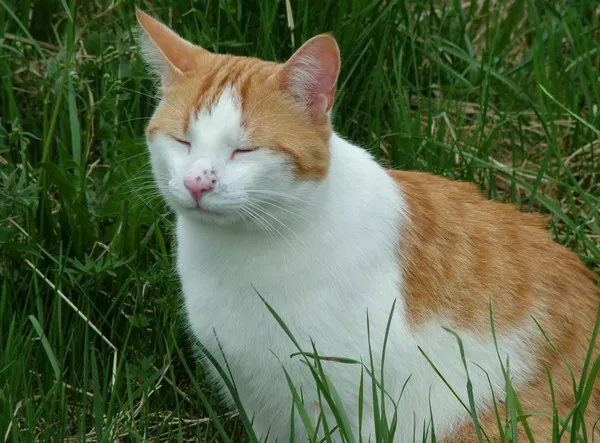Cats are known for their discerning palates and unique dietary preferences. As obligate carnivores, their nutritional needs are distinct from those of omnivores, and understanding what makes certain foods irresistible to them can enhance their health and well-being. This essay delves into the various types of food that cats find most appealing, exploring the science behind their preferences, the nutritional value of these foods, and practical tips for cat owners to incorporate irresistible options into their pets’ diets.
The Feline Diet: A Brief Overview
Nutritional Needs of Cats
Cats require a diet high in protein, moderate in fat, and low in carbohydrates. Key nutrients include:
Protein: Essential for growth, maintenance, and energy. Cats need amino acids like taurine, arginine, and methionine.
Fats: Provide energy and support cell structure. Essential fatty acids, such as arachidonic acid, are crucial for health.
Vitamins and Minerals: Vital for various bodily functions, including immune response, bone health, and metabolism.
The Role of Taste and Smell
Cats have a highly developed sense of smell, which significantly influences their food preferences. They possess around 50 to 80 million olfactory receptors, compared to humans’ 5 million, making scent a critical factor in their food choices. Additionally, cats have fewer taste buds than humans, particularly for sweetness, but are highly sensitive to amino acids and certain fatty acids.
Irresistible Foods for Cats
Meat-Based Diets
a. Chicken
Chicken is often considered the most irresistible food for cats. Its high protein content, palatability, and aroma make it a favorite. Many commercial cat foods use chicken as a primary ingredient, and cats often show a strong preference for fresh, cooked chicken.
b. Fish
Fish, particularly tuna and salmon, is another highly appealing option. Rich in omega-3 fatty acids, fish not only tastes good but also supports a cat’s skin and coat health. However, it should be fed in moderation due to potential mercury exposure and the risk of developing a fish addiction.
c. Beef
Beef is less commonly used in commercial cat foods but can be a tasty treat for many cats. It is rich in iron and other essential nutrients. Providing small amounts of cooked beef can be a delightful addition to a cat’s diet.
Cat Treats
a. Freeze-Dried Treats
Freeze-dried meats, such as chicken, turkey, or fish, are incredibly popular among cats. The freeze-drying process preserves the natural flavors and nutrients, making them highly palatable. Their crunchy texture adds an appealing element for many cats.
b. Soft Chewy Treats
Many cats enjoy soft, chewy treats that are often flavored with chicken or fish. These treats can be used for training or as rewards, and their texture can be particularly enticing for older cats or those with dental issues.
Wet vs. Dry Food
a. Wet Food
Wet food is generally more appealing to cats due to its moisture content and strong aroma. The high protein and fat levels found in many wet foods align with a cat’s dietary needs, making them a preferred choice for many felines. Additionally, the texture of wet food can be more satisfying for cats, particularly those who may struggle with dry kibble.
b. Dry Food
While dry food is convenient and can help with dental health, it may not be as enticing as wet food. However, many cats enjoy crunchy kibble, especially if it is flavored or contains meat-based ingredients. Mixing wet and dry food can provide variety and cater to different preferences.
Homemade Cat Food
a. Cooked Meals
Many cat owners choose to prepare homemade meals for their pets, using fresh, high-quality ingredients. Cooked chicken, turkey, or fish can be mixed with appropriate vegetables and supplements to create a balanced diet. This option allows owners to tailor meals to their cats’ preferences.
b. Raw Diets
Some owners opt for raw diets, believing they mimic a cat’s natural eating habits. Raw meat, organs, and bones can be enticing for cats, but this approach requires careful planning to ensure nutritional balance and safety.
Special Ingredients
a. Broth and Gravies
Cats are often attracted to the aroma of broths and gravies. Adding low-sodium chicken or fish broth to their meals can enhance flavor and increase moisture intake. Many commercial cat foods and treats incorporate these elements to boost palatability.
b. Catnip and Cat Grass
While not food in the traditional sense, catnip and cat grass can stimulate a cat’s appetite and make meals more enjoyable. Catnip can entice cats to eat, while cat grass provides fiber and aids digestion.
Factors Influencing Food Preferences
Age and Health
A cat’s age, health status, and dental condition can significantly influence its food preferences. Kittens may prefer softer textures, while older cats might gravitate towards easily chewable options. Health issues can also dictate dietary needs, making it essential to consult with a veterinarian when introducing new foods.
Environmental Factors
The environment in which a cat eats can impact its food preferences. Cats are sensitive to their surroundings, and a calm, quiet space can encourage them to eat. Additionally, the presentation of food—such as using elevated dishes or varied textures—can enhance their eating experience.
Social Influences
Cats are social animals, and their eating habits can be influenced by their interactions with other pets. Observing a companion animal enjoying a particular food may encourage a cat to try it as well.
Conclusion
Understanding what makes food irresistible to cats involves considering their unique nutritional needs, sensory preferences, and environmental factors. From high-quality meats to enticing treats and flavorful broths, there are numerous options available to delight even the pickiest of eaters. By providing a varied diet that incorporates these irresistible foods, cat owners can ensure their feline companions remain healthy, happy, and well-nourished. Whether opting for commercial products or homemade meals, the key is to prioritize quality and palatability, making mealtime a joyful experience for both cats and their owners.
Related topic:



























